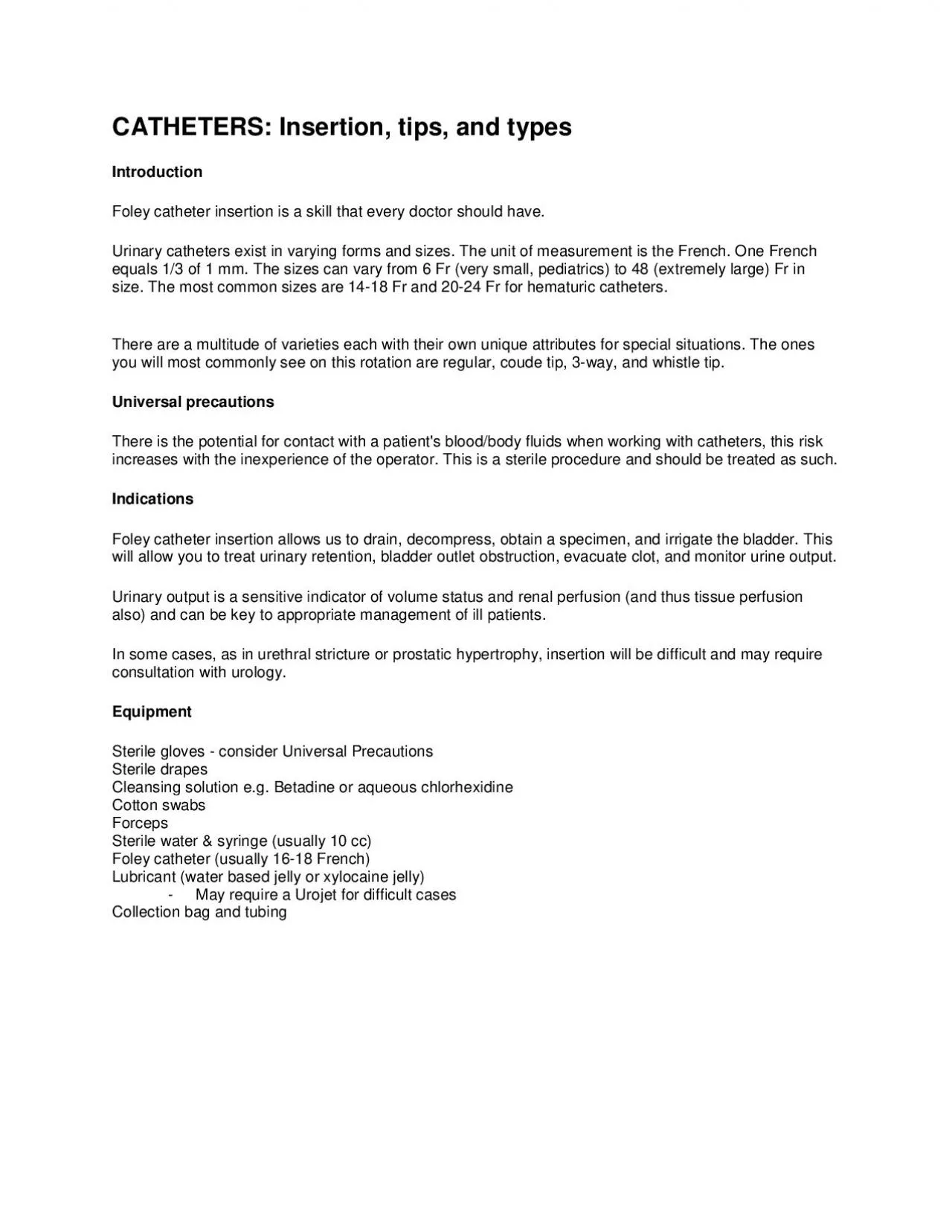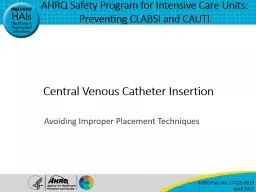PDF-CATHETERS Insertion tips and types
Author : davies | Published Date : 2022-08-21
ntroduction Foley catheter insertion is a skill that every doctor should have Urinary catheters exist in varying forms and sizes The unit of measurement itheFrench
Presentation Embed Code
Download Presentation
Download Presentation The PPT/PDF document "CATHETERS Insertion tips and types" is the property of its rightful owner. Permission is granted to download and print the materials on this website for personal, non-commercial use only, and to display it on your personal computer provided you do not modify the materials and that you retain all copyright notices contained in the materials. By downloading content from our website, you accept the terms of this agreement.
CATHETERS Insertion tips and types: Transcript
Download Rules Of Document
"CATHETERS Insertion tips and types"The content belongs to its owner. You may download and print it for personal use, without modification, and keep all copyright notices. By downloading, you agree to these terms.
Related Documents














